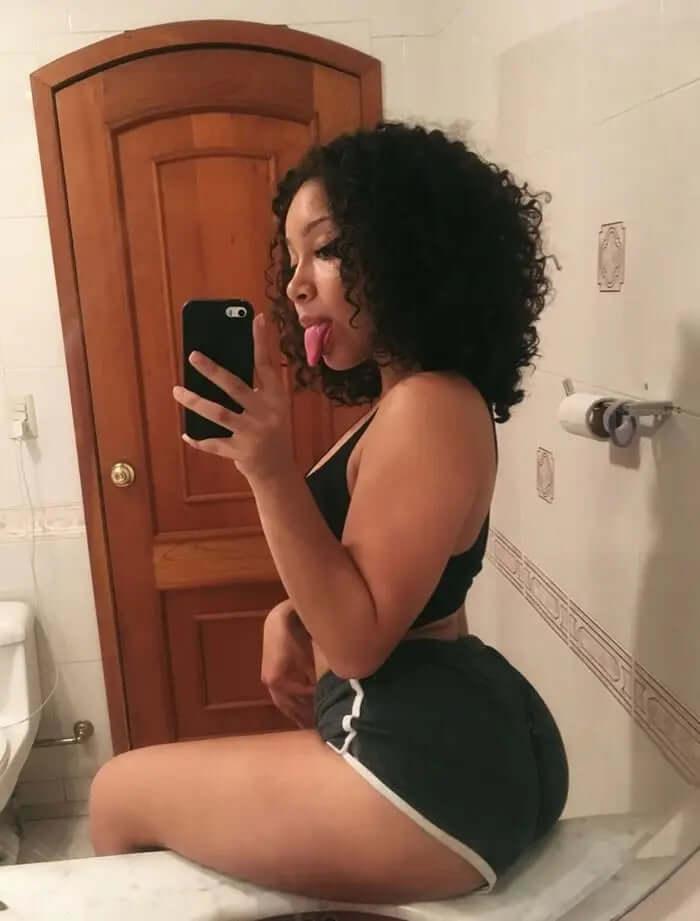
Does Sitting Make Your Bum Bigger?
Share
Does Sitting Make Your Bum Bigger?
It's not doing you any favors, but your booty isn't doomed.

If you have a desk job, chances are you’re sitting in your chair for 8+ hours each day. When you get up every now and then, maybe you notice your tush is a little sore. Or perhaps you've checked yourself out lately and notice a little less perk than you used to have. Well, it's not just your imagination. While all that excess typing and minimal moving may be good for your career, it’s not all that great for your butt.
But don’t quit your day job—there are steps you can take to keep that booty popping.
“When you sit all day, basically what happens is your glutes shut down,” Dan Giordano, D.P.T., C.S.C.S., and co-founder of Bespoke Treatments Physical Therapy, tells SELF. Since your glutes impact your hip movement, pelvis rotation, and pelvic stability, what’s bad for your butt is actually bad for your entire body.
When you sit for long periods of time, especially with poor posture (which, Giordano notes, 90 percent of people are guilty of), your hip flexors tighten up and cause reciprocal inhibition (preventing activation) of the glutes. “When this happens, your pelvis can’t rotate forward, causing compression in the lower back which can lead to back pain,” Giordano says. Over time, if it goes unchecked, this can lead to chronic pain. “It’s not going to happen right away, but sitting at desk for five years, it will,” he adds.
“If hips or glutes aren’t working properly, it can increase impact force all the way to the knees and ankles,” Giordano says. When the big muscle (the butt) isn’t pulling its weight, the pressure and force relocates to these weaker spots.
Inhibited gluteus muscles won’t fire properly, and over time, if they’re not activating regularly, they’ll get weaker. This is called muscle atrophy, and can undo any hard work you’ve done to build a strong, sturdy behind. Not to mention make those squats feel way harder than they used to.
Years of sitting can potentially change the shape of your booty over time. Giordano says he’s seen this in his patients that go from a very active job to a desk job that involves lots of sitting. "An anterior pelvic tilt (tight hip flexors) can make your booty appear flatter."
Adam Gallo, personal trainer at Brooklyn Boulders Queensbridge, says some of his private clients come in specifically looking to reverse the damage sitting all day does to their bodies—including in the rear. "A lot of times, it's when they hit their mid to late 20s, and they've started to focus on their career and have put aside activity," he explains. What makes wakes them up is when they look in the mirror and actually see the changes (think: less muscle tone, less perk, and even sagginess). The quality of your skin can even suffer when you're not getting your blood pumping enough, Gallo adds. "Cellulite can form because of lack of blood flow at skin level, which causes loss of collagen." While it's far from the sole cause, it can certainly contribute.
Adjust your chair so your hips are slightly above your knees, feet resting flat on the floor. Make sure your lower back is supported, either by a sturdy chair back, or a pillow. Keep shoulders relaxed, but upright, and head directly over the shoulders. Your computer screen should be eye level or slightly below—if it’s too low, your head will bend forward. Elbows should be about table height, and make sure you’re close enough to your desk that you’re not reaching for the keyboard.
As long as you’re activating those glutes outside of your day job, you don’t really need to worry. Giordano recommends Pilates to strengthen your core and improve your posture. Barre classes that target the hips and glutes are also great for anyone who’s sitting all day to fire up those muscles and keep them strong. At home, try these seven amazing butt-toning workouts. You can also just do some glute squeezes in your seat, Giordano says, “activating the glutes by just squeezing them together.” If you're feeling tight, use a foam roller on your hip flexors, quads, and butt once or twice daily, to ease soreness and increase mobility and flexibility.
